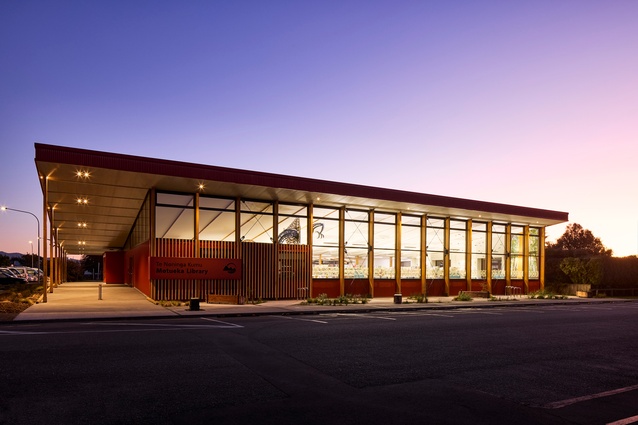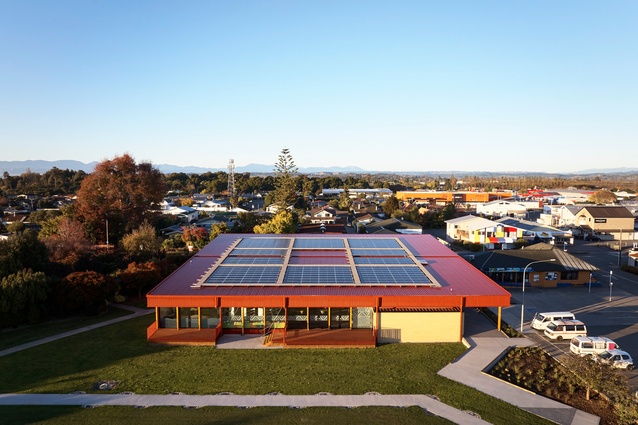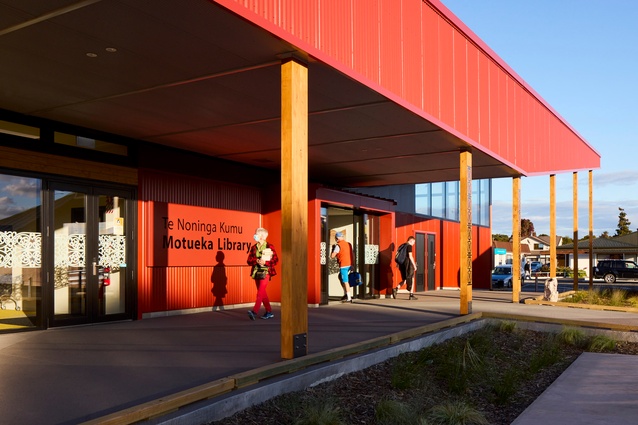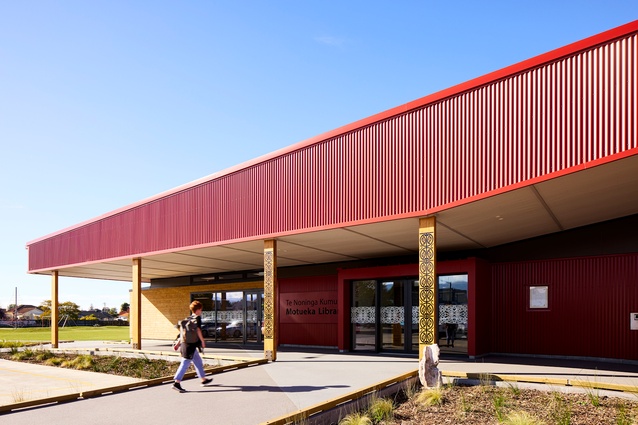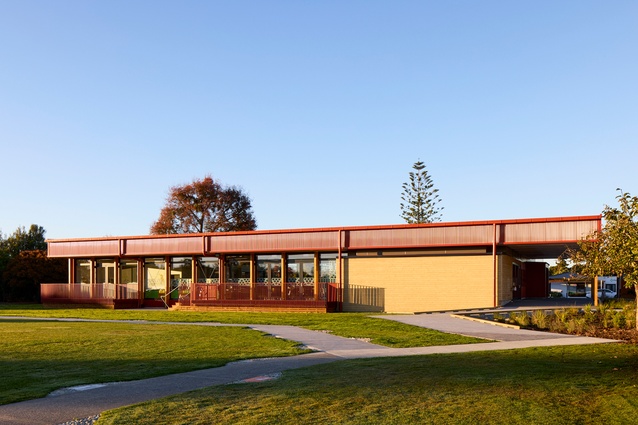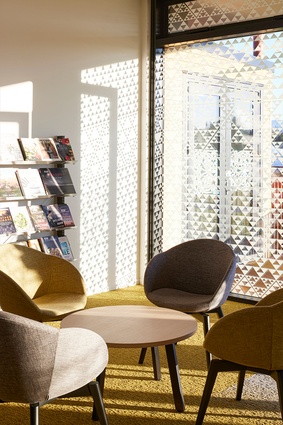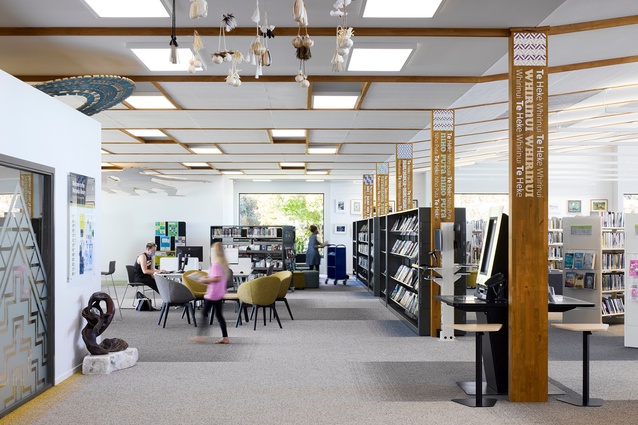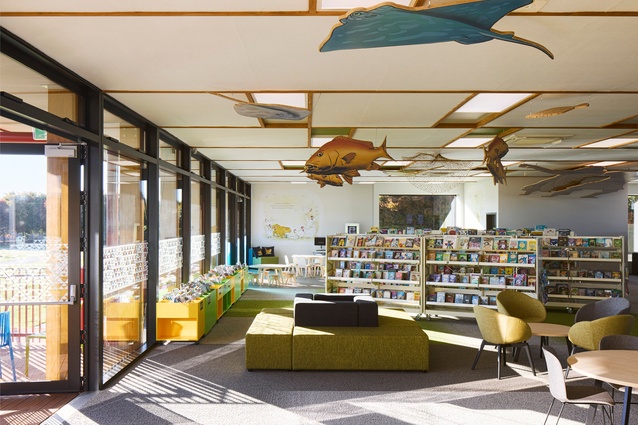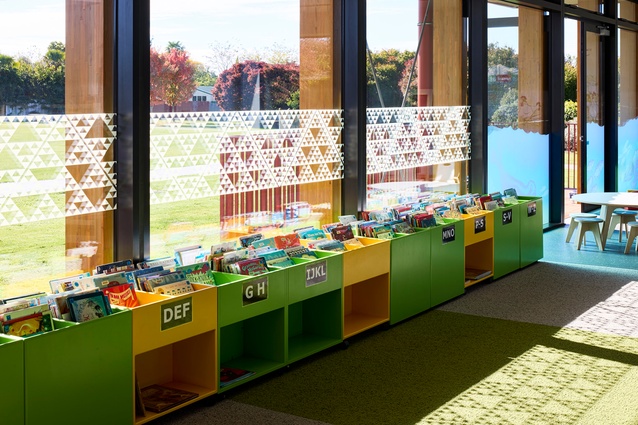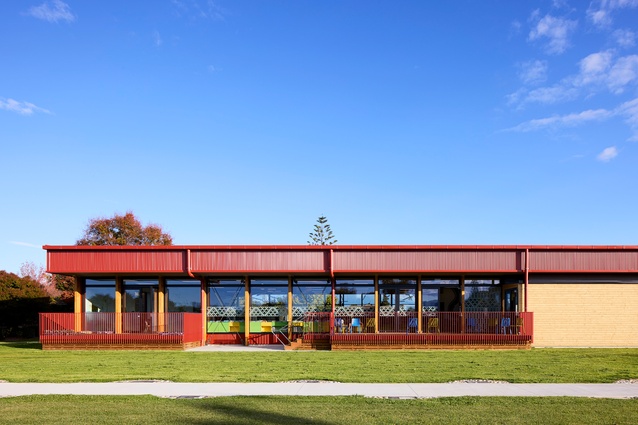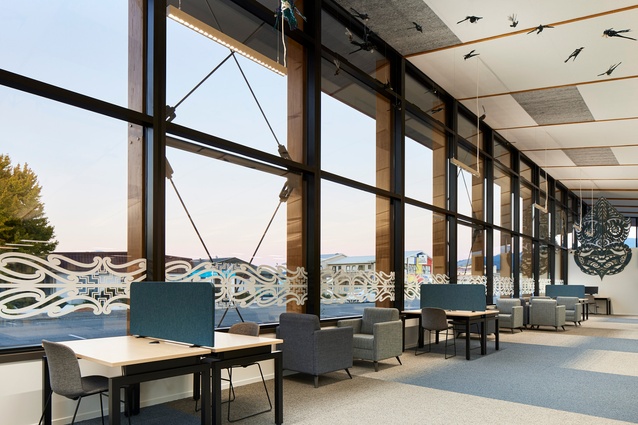Motueka’s net zero community hub
One year on from its opening in March 2022, the net-zero Te Noninga Kumu Motueka Public Library by Jerram Tocker Barron Architects is now powering itself, as well as energising borrowing and memberships.
The brief for the project from Tasman District Council called for community spaces, connection to the nearby reserve, and a sustainable building that referenced the Motueka location. Delivered as a design and build contract with a fixed project budget of $3.8M, the design had a strong focus on low carbon and uses energy-efficient design throughout.
This focus on sustainable design is now paying off; in the twelve months since opening the 80kWh/m2/year used by the 1100m2 library has been provided entirely by onsite generation from the 256 roof-mounted photovoltaic panels. The building also produces a surplus of 151kWh/m2/year, which goes back to onsite battery storage or to the grid — enough to power seven houses annually.
Borrowing and memberships have also experienced a surge since the opening of the new library, with a 63% increase in borrowing compared to the previous year and a 30% increase in memberships in the region.
A new take on a traditional vernacular

Inspired by the functional forms of rural farm buildings found in the Tasman region, the library takes its visual cues from horticultural barns and storage sheds.
Utilising a fully timber structure, expansive glazing on the southern side fronts onto nearby Wallace Street creates a strong connection to the street and civic presence. On the northern side, a veranda overlooks the open space of Decks Reserve — providing views and creating a more relaxed environment.
Internally, areas are largely flexible, using an open plan that can be re-configured as needed. The social lounge and children’s areas are located adjacent to the northern veranda, overlooking Decks Reserve, with the young adult area adjacent to this. The adult collections are located in the southern half, with the study, research and quiet reading areas located on the northern and eastern edges away from the louder active spaces.
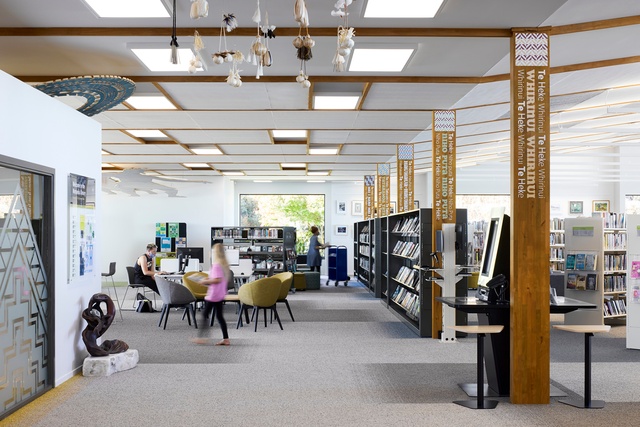
Cultural and community design elements throughout the library cultivate a sense of common ownership, responsibility, and respect for the building. Artworks inside the building arose from significant collaboration with artists from local Iwi Ngāti Rarua and Te Atiawa and the surrounding landscape design by Canopy Landscape Architects encourages relaxed engagement, and also references both Māori and Pakeha land use patterns.
Notes on sustainability
Early in the project, a full life cycle carbon analysis was completed for the design of a new building, which assisted in guiding design decisions with the client. The locally-sourced timber super-structure — combined with some clever engineering — has significantly reduced the need for structural steel, requiring only one gravity beam and minimal use of steel for cross bracing.
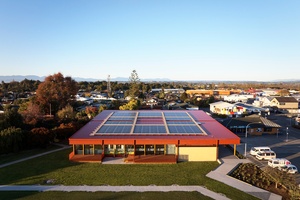
From project inception, there was a goal to reduce the use of toxic materials in the build. This resulted in an in-depth investigation and report procedure on the red list and removing red list items. Although the project was not completely red list-free, this process significantly reduced the selection of toxic materials used in the project.
All the stormwater runoff associated with the building (1400m2 of roof) is dealt with on-site through soakage. Added to this is a small water storage tank (10,000l) feeds into the nearby Japanese garden pond with untreated water for the carp.
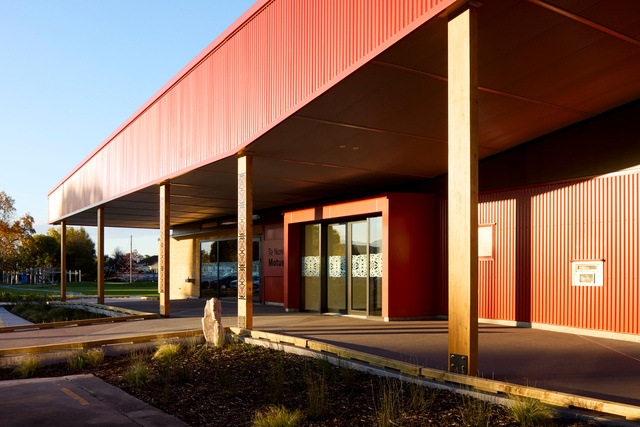
Additional funding became available through a grant after the building was on site. This was put into 256 roof-mounted photovoltaic panels — 102kw 3 phase and 45kw lithium battery storage sized to allow the building to operate off-grid for much of the year, to date over 80% of the time.
Embodied carbon metrics
Life Cycle Analysis (Stage A1-D1)
294,513kgCO2eq (268kg CO2eq/m2)
Embodied Carbon (Stage A1-A5)
328,600kgCO2eq (298kg CO2eq/m2)
Whole of Life Embodied Carbon (A1-A5, B1-B5, C1-C4)
743,619kgCO2eq (676kg CO2eq/m2)
For more information on this project, or to view more projects by Jerram Tocker Barron Architects, head to their website.

